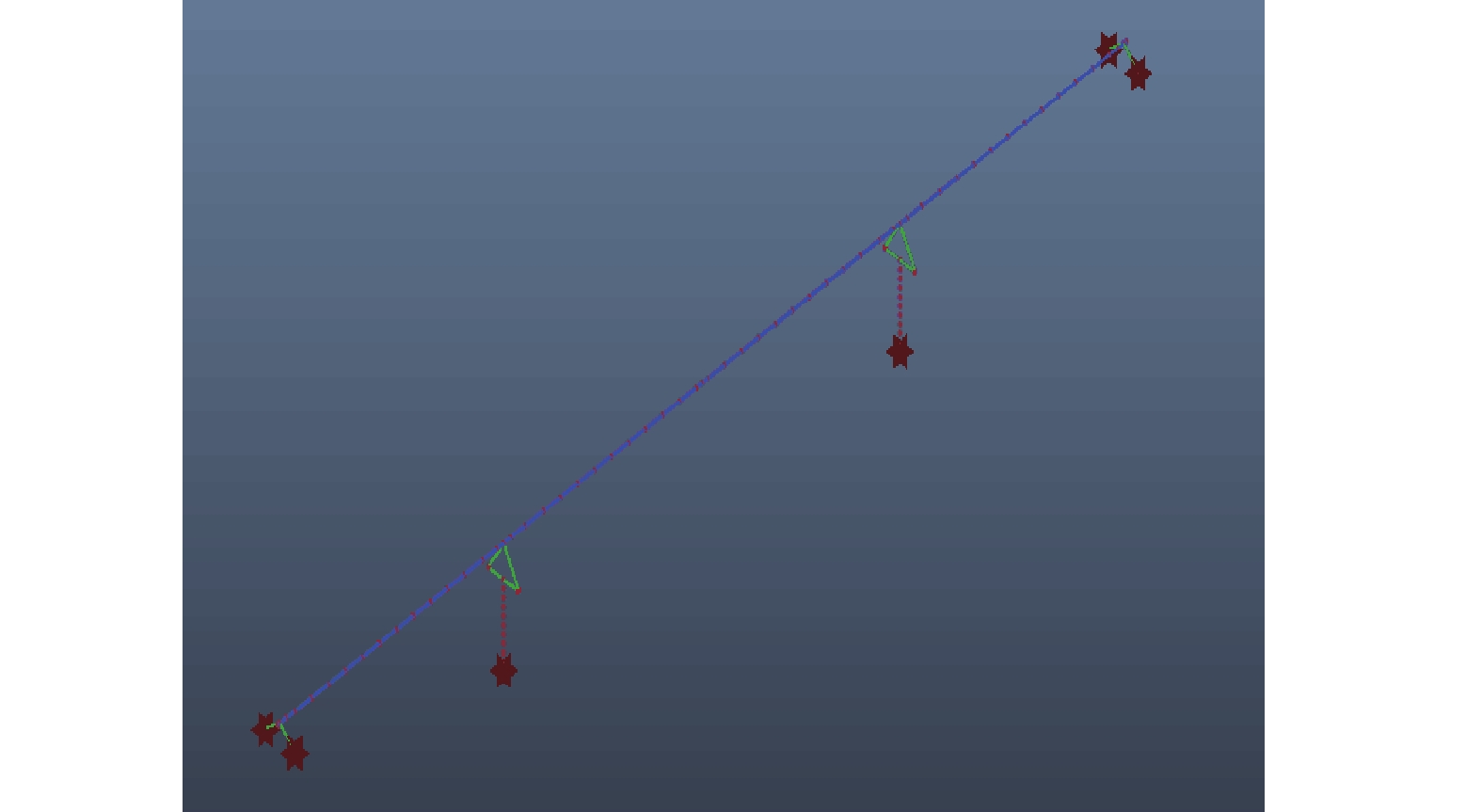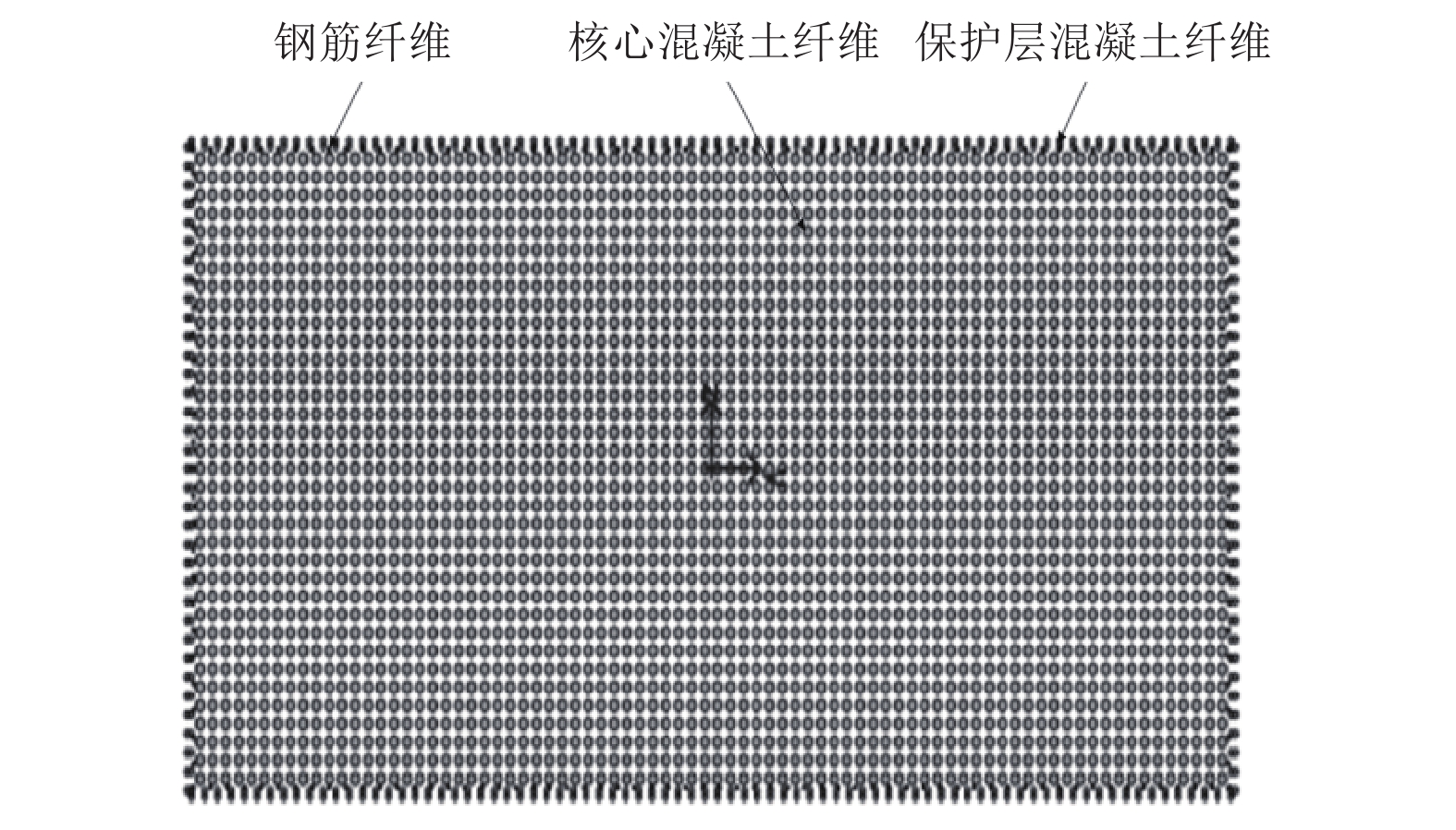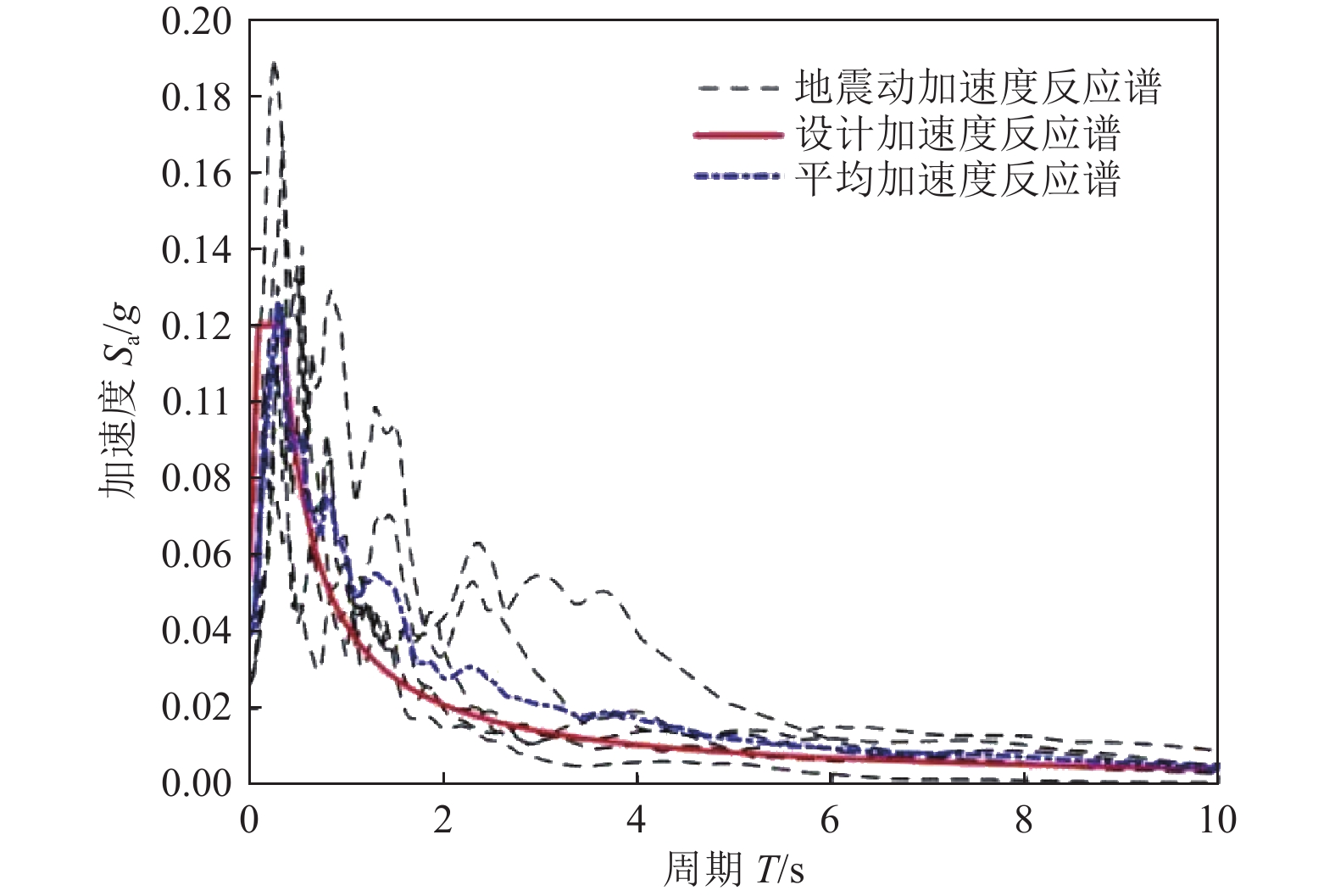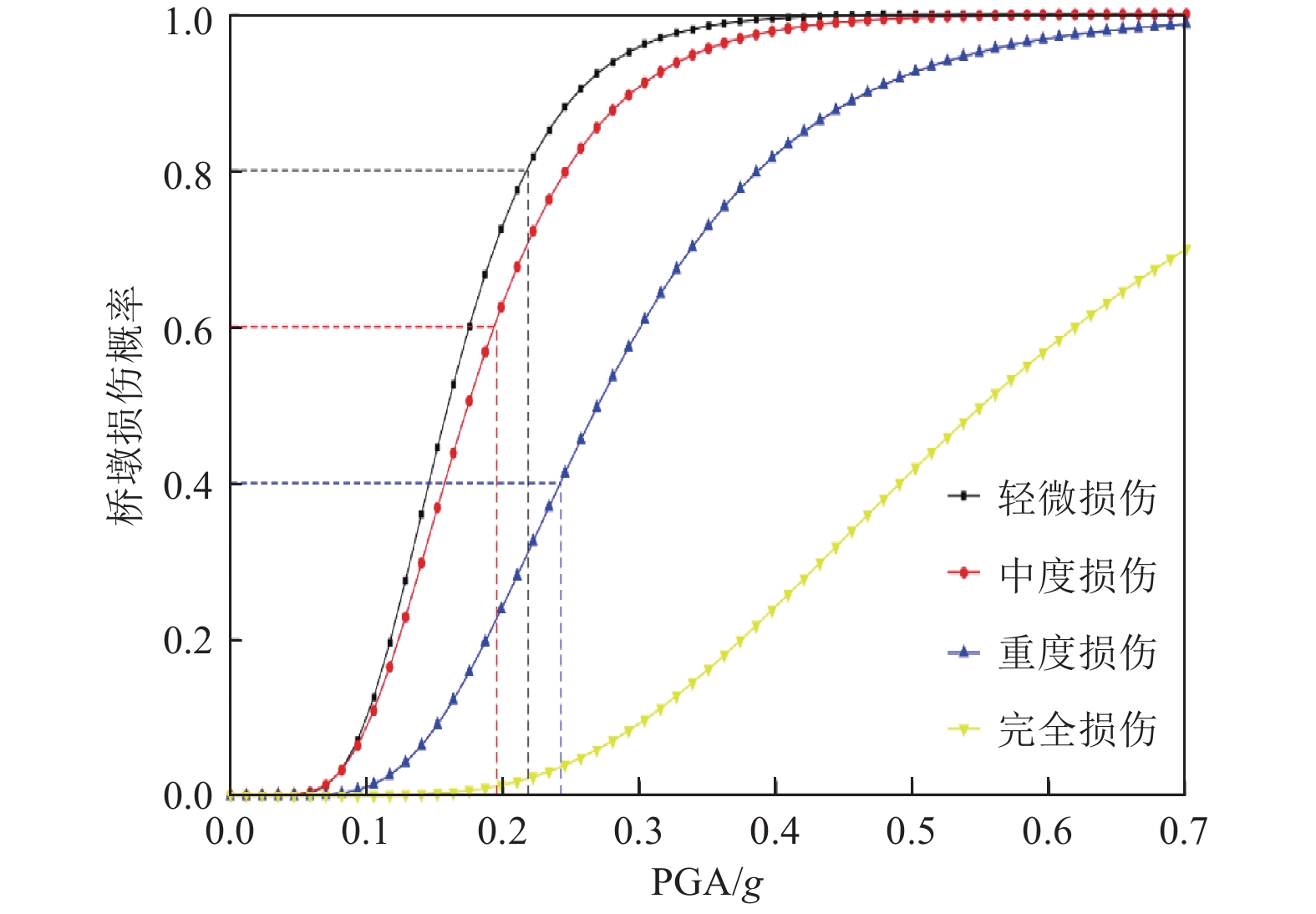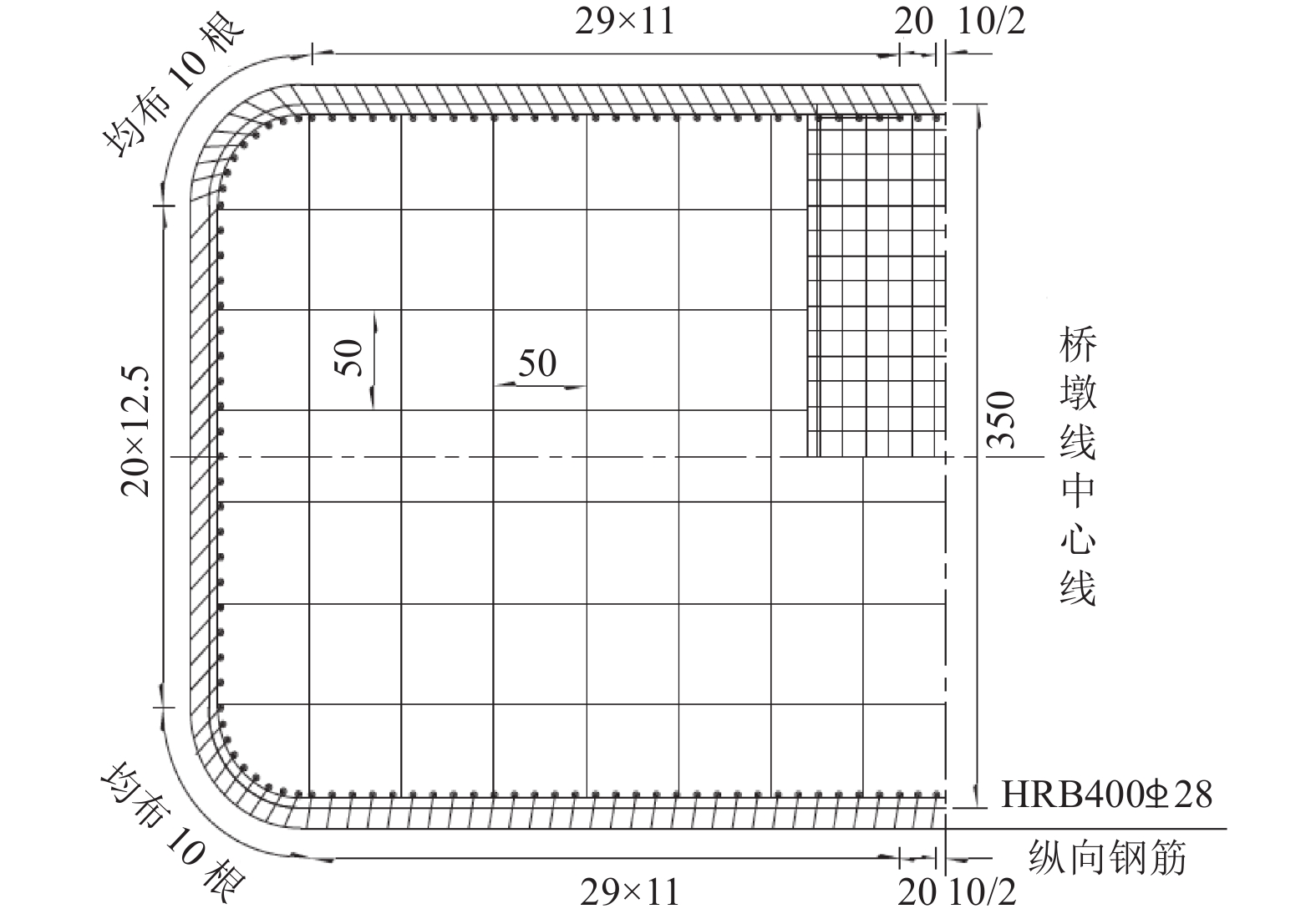Calibration of Seismic Input Parameter Based on Reliability and Fragility
-
摘要: 在基于性能的地震工程理念与经典可靠度理论框架下,分析了地震易损性与结构可靠度的共同特性,阐释了将两者相结合的理论基础与概率方法;以一座三跨连续梁桥为例,基于OpenSees平台建立桥梁有限元模型,通过非线性动力时程分析对结构进行概率地震需求及易损性分析,基于易损性曲线考虑3种抗震目标对桥墩进行抗震设计,并对设计墩柱进行恒载与车辆活载作用下的可靠度分析;考虑不同地震重现期,根据泊松随机过程计算各类地震作用下的目标可靠度,基于概率方法对结构的初始可靠度进行修正,进一步结合地震易损性,确定不同抗震目标下的地震动水平,提出基于可靠度与易损性的地震动输入参数确定方法。结果表明,1000年、475年和50年地震重现期下,修正PGA均值分别为0.25 g、0.24 g和0.22 g,高于仅考虑易损性时的0.21 g。本方法将地震易损性与可靠度相结合,为结构不同层次的抗震设计提供了思路与方法。Abstract: Within the framework of Performance-Based Earthquake Engineering (PBEE) and classical reliability theory, this study reviews the common characteristics of seismic fragility and reliability, interpreting the theoretical foundation and probabilistic methods for their combination. In the case study, probabilistic engineering demand parameters and seismic fragility for a continuous girder bridge are first analyzed using non-linear dynamic time-history analysis. Then, three types of seismic performance objectives are considered for the seismic design of the pier. Additionally, reliability analysis is conducted considering dead load and vehicle live load. Various seismic return periods are set to calculate target reliability indexes according to the Poisson random process. This process calibrates the initial reliability index, which is then combined with the fragility curve using a probabilistic approach to determine seismic input parameters for different seismic performance objectives. The results show that the calibrated input parameters are 0.25 g, 0.24 g, and 0.22 g for return periods of
1000 , 475, and 50 years, respectively. These values are slightly larger than the 0.21 g determined by the fragility curve alone. The proposed method simultaneously considers seismic fragility and reliability, providing a new approach for the seismic design of structures with varying seismic requirements.-
Key words:
- PBEE /
- Seismic fragility /
- Reliability /
- Seismic parameter
-
表 1 基础地震动记录
Table 1. Ground motions set as benchmark
序号 地震记录 记录地点 震中距/km PGA/g 1 Borrego El Centro Array #9 56.88 0.066 2 Kern County LA - Hollywood Stor FF 114.62 0.042 3 San Fernando 2516 Via Tejon PV55.2 0.026 4 San Fernando LB - Terminal Island 58.99 0.029 5 San Fernando Port Hueneme 68.84 0.027 6 San Fernando San Juan Capistrano 108.01 0.043 表 2 桥梁损伤状态描述及损伤指标
Table 2. Bridge damage states and their measurements by displacement ductility ratios
损伤状态 具体描述 准则 位移延性比 无破坏 墩柱无明显裂缝, 钢筋无屈服 $ 0 < \mu \leqslant {\mu }_{\mathrm{c}\mathrm{y}1} $ $ 0 < \mu \leqslant 1 $ 轻微破坏 墩柱表面出现明显裂缝,最外侧钢筋首次出现理论屈服 $ {\mu }_{\mathrm{c}\mathrm{y}1} < \mu \leqslant {\mu }_{\mathrm{c}\mathrm{y}} $ $ 1 < \mu \leqslant 1.12 $ 中等破坏 表层混凝土部分脱落,墩柱产生非线性变形,墩底塑性铰开始形成 $ {\mu }_{\mathrm{c}\mathrm{y}} < \mu \leqslant {\mu }_{\mathrm{c}4} $ $ 1.12 < \mu \leqslant 1.97 $ 严重破坏 塑性铰完全形成,保护层混凝土全部剥落,核心混凝土部分开裂,纵筋大量屈服 $ {\mu }_{\mathrm{c}4} < \mu \leqslant {\mu }_{\mathrm{c}\mathrm{m}\mathrm{a}\mathrm{x}} $ $ 1.97 < \mu \leqslant 4.97 $ 完全破坏 核心混凝土压碎,箍筋断裂 $ {\mu }_{\mathrm{c}\mathrm{m}\mathrm{a}\mathrm{x}}\leqslant \mu $ $ 4.97\leqslant \mu $ 表 3 抗力和荷载效应的统计特征参数
Table 3. Statistics parameters for resistance and load effect
随机变量类别 均值/(kN·m) 标准差 抗力 $ {\mu }_{{M}_{{\mathrm{R}}}}=48\;863.72 $ $ {\sigma }_{{M}_{{\mathrm{R}}}}=2\;855.02 $ 恒载 $ {\mu }_{{M}_{{\mathrm{G}}}}=19\;722.05 $ $ {\sigma }_{{M}_{{\mathrm{G}}}}=8\;492.84 $ 活载 $ {\mu }_{{M}_{{\mathrm{Q}}}}=1\;105.61 $ $ {\sigma }_{{M}_{{\mathrm{Q}}}}=173.55 $ 表 4 不同地震重现期下的修正可靠度与修正系数
Table 4. Calibrated reliability index and calibration coefficient for various return periods
重现期$ {T}_{0} $ 设计基准期t 修正后$ {\beta }'' $ 初始$ \beta $ 修正系数$ \alpha $ 1000 100 3.9141 3.3039 1.1847 475 100 3.7441 3.3039 1.1332 100 100 3.4304 3.3039 1.0383 75 100 3.3888 3.3039 1.0257 50 100 3.3445 3.3039 1.0123 25 100 3.3091 3.3039 1.0016 10 100 3.3039 3.3039 1.0000 5 100 3.3039 3.3039 1.0000 表 5 重现期为1000年时的地震动参数修正值(
${\boldsymbol{ \alpha }} $ = 1.1847)Table 5. Calibrated peak ground accelerations for the return period of
1000 a(${\boldsymbol{ \alpha }} $ = 1.1847)损伤状态 修正前 修正后 PGA/g $ {u}_{\mathrm{D}\mathrm{I}} $ $ {u}'_{\mathrm{D}\mathrm{I}} $ PGA/g 80%轻微损伤 0.210 1.531 $ \alpha \cdot DI=1.814 $ 0.253 60%中度损伤 0.183 1.280 $ \alpha \cdot DI=1.516 $ 0.220 40%重度损伤 0.229 1.714 $ \alpha \cdot DI=2.030 $ 0.276 表 6 重现期为475年时的地震动参数修正值(
$ {\boldsymbol{\alpha}} $ = 1.1332)Table 6. Calibrated peak ground accelerations for the return period of 475 a(
${\boldsymbol{ \alpha}} $ = 1.1332)损伤状态 修正前 修正后 PGA/g $ {u}_{\mathrm{D}\mathrm{I}} $ $ {u}'_{\mathrm{D}\mathrm{I}} $ PGA/g 80%轻微损伤 0.210 1.531 $ \alpha \cdot DI=1.735 $ 0.244 60%中度损伤 0.183 1.280 $ \alpha \cdot DI=1.450 $ 0.213 40%重度损伤 0.229 1.714 $ \alpha \cdot DI=1.942 $ 0.266 表 7 重现期为50年时的地震动参数修正值(
${\boldsymbol{ \alpha}} $ =1.0123)Table 7. Calibrated peak ground accelerations for the return period of 50 a(
${\boldsymbol{ \alpha }} $ = 1.0123)损伤状态 修正前 修正后 PGA/g $ {u}_{\mathrm{D}\mathrm{I}} $ $ {u}'_{\mathrm{D}\mathrm{I}} $ PGA/g 80%轻微损伤 0.210 1.531 $ \alpha \cdot DI=1.550 $ 0.224 60%中度损伤 0.183 1.280 $ \alpha \cdot DI=1.296 $ 0.195 40%重度损伤 0.229 1.714 $ \alpha \cdot DI=1.735 $ 0.244 -
冯莉,樊燕燕,李子奇等,2020. 高速铁路连续梁桥全寿命周期概率地震损失分析. 铁道科学与工程学报,17(4):815−822. doi: 10.19713/j.cnki.43−1423/u.T20190690Feng L., Fan Y. Y., Li Z. Q., et al., 2020. Probabilistic whole life cycle seismic loss analysis of high-speed railway continuous girder bridge. Journal of Railway Science and Engineering, 17(4): 815−822. (in Chinese) doi: 10.19713/j.cnki.43−1423/u.T20190690 李宏男,成虎,王东升,2018. 桥梁结构地震易损性研究进展述评. 工程力学,35(9):1−16. doi: 10.6052/j.issn.1000-4750.2017.04.0280Li H. N., Cheng H., Wang D. S., 2018. A review of advances in seismic fragility research on bridge structures. Engineering Mechanics, 35(9): 1−16. (in Chinese) doi: 10.6052/j.issn.1000-4750.2017.04.0280 李杰,2018. 工程结构整体可靠性分析研究进展. 土木工程学报,51(8):1−10.Li J., 2018. Advances in global reliability analysis of engineering structures. China Civil Engineering Journal, 51(8): 1−10. (in Chinese) 陆新征,叶列平,2010. 基于IDA分析的结构抗地震倒塌能力研究. 工程抗震与加固改造,32(1):13−18. doi: 10.3969/j.issn.1002-8412.2010.01.003Lu X. Z., Ye L. P., 2010. Study on the seismic collapse resistance of structural system. Earthquake Resistant Engineering and Retrofitting, 32(1): 13−18. (in Chinese) doi: 10.3969/j.issn.1002-8412.2010.01.003 吕大刚,李晓鹏,王光远,2006. 基于可靠度和性能的结构整体地震易损性分析. 自然灾害学报,15(2):107−114. doi: 10.3969/j.issn.1004-4574.2006.02.018Lü D. G., Li X. P., Wang G. Y., 2006. Global seismic fragility analysis of structures based on reliability and performance. Journal of Natural Disasters, 15(2): 107−114. (in Chinese) doi: 10.3969/j.issn.1004-4574.2006.02.018 于晓辉,周洲,吕大刚,2022. 钢筋混凝土框架结构的损伤状态相关余震易损性分析. 建筑结构学报,43(4):8−16. doi: 10.14006/j.jzjgxb.2020.0323Yu X. H., Zhou Z., Lü D. G., 2022. Damage-state-dependent aftershock fragility analysis for reinforced concrete frame structures. Journal of Building Structures, 43(4): 8−16. (in Chinese) doi: 10.14006/j.jzjgxb.2020.0323 袁万城,王征南,庞于涛等,2016. 连续梁桥在主震-余震序列波下的地震易损性分析. 哈尔滨工程大学学报,37(12):1671−1676. doi: 10.11990/jheu.201509064Yuan W. C., Wang Z. N., Pang Y. T., et al., 2016. Seismic fragility analysis of a continuous girder bridge subject to an earthquake mainshock-aftershock sequence. Journal of Harbin Engineering University, 37(12): 1671−1676. (in Chinese) doi: 10.11990/jheu.201509064 张明,金峰,2015. 结构可靠度计算. 北京:科学出版社.Zhang M. , Jin F. , 2015. Structural reliability computations. Beijing: Science Press. (in Chinese) Deierlein G. G. , Krawinkler H. , Cornell C. A. , 2003. A framework for performance-based earthquake engineering. In: Proceedings of 2003 Pacific Conference on Earthquake Engineering. Vancouver. Dong Y., Frangopol D. M., Saydam D., 2014. Sustainability of highway bridge networks under seismic hazard. Journal of Earthquake Engineering, 18(1): 41−66. doi: 10.1080/13632469.2013.841600 Ghosh J., Padgett J. E., Sánchez-Silva M., 2015. Seismic damage accumulation in highway bridges in earthquake-prone regions. Earthquake Spectra, 31(1): 115−135. doi: 10.1193/120812EQS347M Hwang H. , Liu J. B. , Chiu Y. H. , 2001. Seismic fragility analysis of highway bridges. Memphis: Center for Earthquake Research and Information the University of Memphis. Karim K. R., Yamazaki F., 2001. Effect of earthquake ground motions on fragility curves of highway bridge piers based on numerical simulation. Earthquake Engineering & Structural Dynamics, 30(12): 1839−1856. Mackie K. , Stojadinović B. , 2003. Seismic demands for performance-based design of bridges. Berkeley: Pacific Earthquake Engineering Research Center, University of California, 1−113. Moehle J. , Deierlein G. G. , 2004. A framework methodology for performance-based earthquake engineering. In: Proceedings of the 13th World Conference on Earthquake Engineering. Vancouver: WCEE. Muntasir Billah A. H. M., Shahria Alam M., 2015. Seismic fragility assessment of highway bridges: a state-of-the-art review. Structure and Infrastructure Engineering, 11(6): 804−832. doi: 10.1080/15732479.2014.912243 Pathak S., Watt S., Khennane A., et al., 2020. Dynamical systems approach for the evaluation of seismic structural collapse and its integration into PBEE framework. Soil Dynamics and Earthquake Engineering, 135: 106184. doi: 10.1016/j.soildyn.2020.106184 Porter K. A. , 2003. An overview of PEER’s performance-based earthquake engineering methodology. In: Proceedings of the Ninth International Conference on Applications of Statistics and Probability in Civil Engineering (ICASP9). San Francisco. Shome N., Allin Cornell C., Bazzurro P., et al., 1998. Earthquakes, records, and nonlinear responses. Earthquake Spectra, 14(3): 469−500. doi: 10.1193/1.1586011 Yoon Y. H., Ataya S., Mahan M., et al, 2019. Probabilistic damage control application: implementation of performance-based earthquake engineering in seismic design of highway bridge columns. Journal of Bridge Engineering, 24(7): 04019068. doi: 10.1061/(ASCE)BE.1943-5592.0001443 -



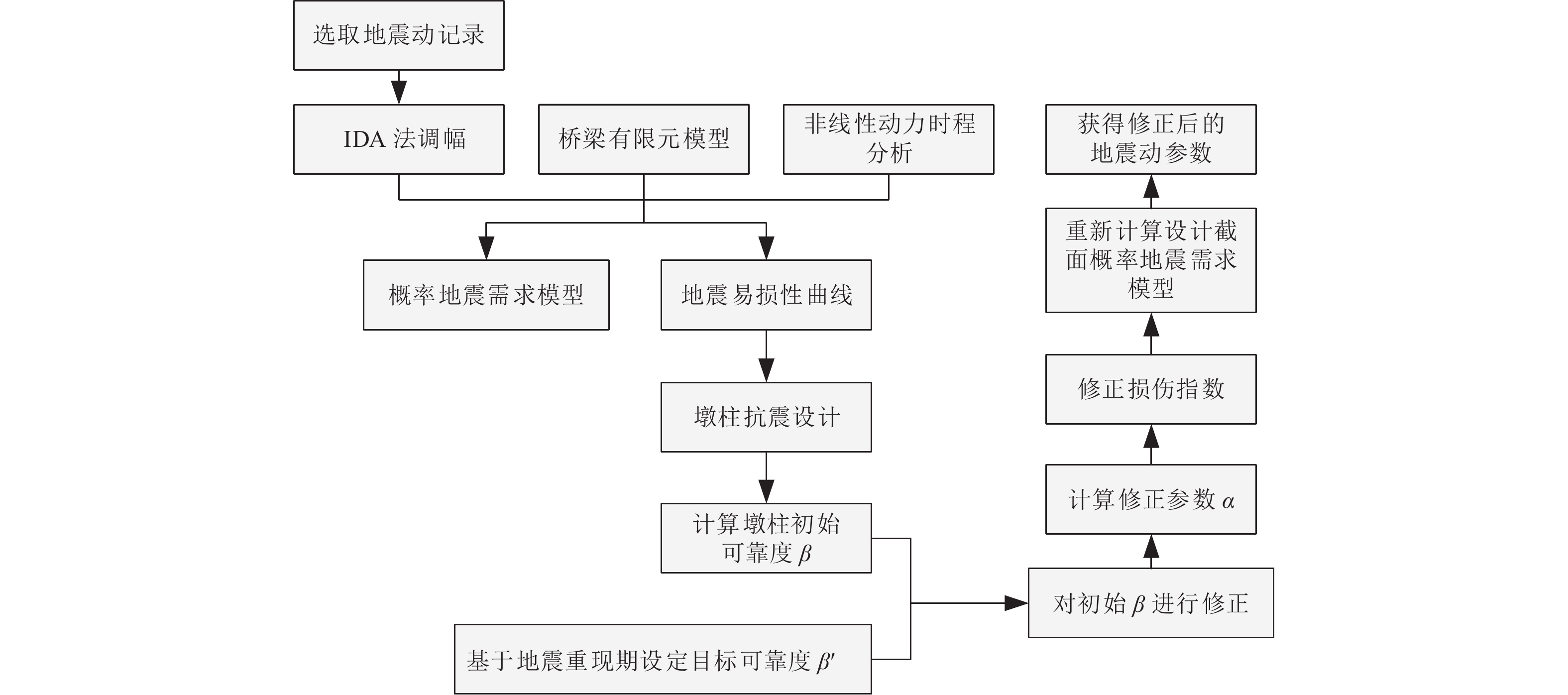
 下载:
下载:
